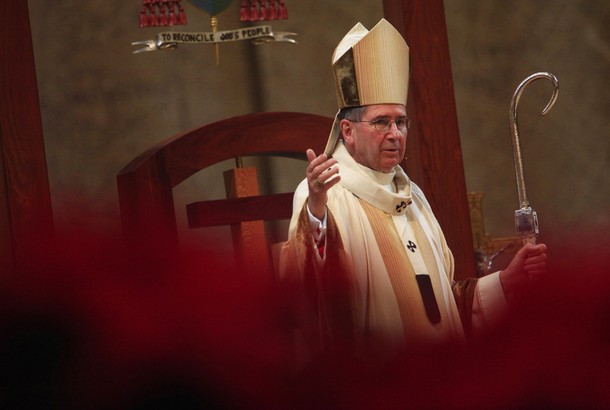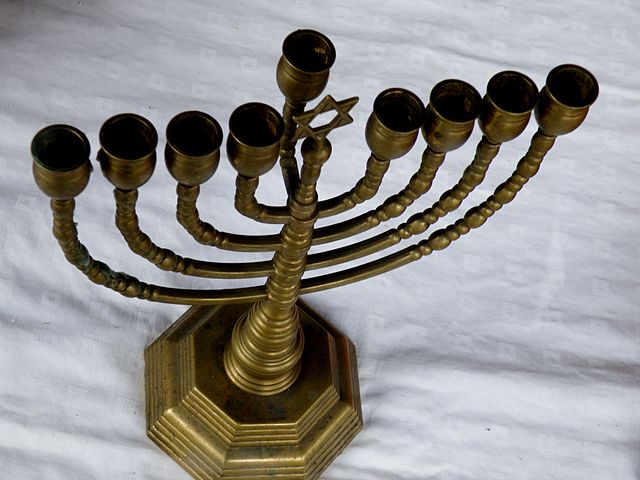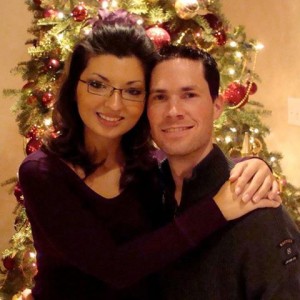If you were going to design a Catholic cardinal (as opposed to an Episcopal Church bishop) who would please the powers that be at The Los Angeles Times, that man would have to look a whole lot like Cardinal Roger Mahony.
Obviously, Mahony never tossed out the basic doctrines of the Catholic faith. However, he was also never anxious to step on the toes of liberal Catholics who leaned in that direction. Meanwhile, he was one of the princes of the church that doctrinally conservative (and politically conservative) Catholics most loved to hate and it was easy to see that the cardinal felt the same way about them.
Cardinal Mahony took over in 1985 and his progressive Catholic resume grew year after year. He was a strong voice on Latino issues and immigration. After the Los Angeles riots, he was the voice of moral authority seeking peace and economic justice. He was one of the first people Al Gore would see when he hit town to talk about the environment. He spoke out early and often on the death penalty, labor conditions and nuclear disarmament. He was the driving force behind the massive, postmodern, all-but-interfaith Cathedral of Our Lady of the Angels that cost $189 million and infuriated liturgical traditionalists (and some on the economic left) who called it the “Taj Mahony.”
As a stunning Times profile put it earlier this month:
Where his predecessors had talked up praying the rosary, Mahony touted his positions on nuclear disarmament and Middle East peace, porn on cable TV and AIDS prevention. No issue seemed outside his purview: When an earthquake struck El Salvador, he cut a $100,000 check. When a 7-year-old went missing in South Pasadena, he wrote her Protestant parents a consoling letter.
Reporters took notes and the influential took heed. The mayor, the governor, business executives and millionaires recognized a rising star and sought his company.
Among the thousands of papers that crossed his desk in September 1986 was a handwritten letter.
“During priests’ retreat … you provided us with an invitation to talk to you about a shadow that some of us might have,” Father Michael Baker wrote. “I would like to take you up on that invitation.”
The note would come to define Mahony’s legacy more than any public stance he took or powerful friend he made.
In other words, there was a bomb ticking during the entire Mahony era. That bomb, of course, was the hidden cost — personal, spiritual and financial — of the scandal rooted in the sexual abuse of children and teens by Catholic clergy under the control of the cardinal.
This massive Times piece does a very, very solid job of charting the sweep of the scandal, using the sickening case of Father Michael Baker as the connecting thread.
The documents in the scandal are outlined and dissected. It’s easy to see why Mahony was such a symbolic figure, in part because his tenure in Los Angeles began precisely at the start of the clergy-abuse-scandal headlines. His career arc, notes the Times, aligns perfectly with the whole scandal era and he was still in power when everything came crashing down, with the release of the massive secret files stashed away by his staff.
Yes, this is the rare piece that actually begins at the beginning, not with the headlines in Boston.
… In 1985, after a molester priest caused a scandal in Louisiana, U.S. bishops held a closed-door session on abuse at their annual conference.
Mahony and other bishops subsequently received a lengthy report warning of the legal and public relations ramifications of abuse and offering tips for dealing with such cases. The report, written by a priest, a psychiatrist and a lawyer, presented the topic in a risk-analysis manner appealing to pragmatists like Mahony.
“Our dependence in the past on Roman Catholic judges and attorneys protecting the Diocese and clerics is GONE,” the report said.
The key lawyer behind that report stressed that it was time for Catholic officials to start leveling with police and reporting accusations against abusers, rather than continuing to hide them. Mahony didn’t do that for many years.
What the Times editors never really ask, in this otherwise gripping feature, is a basic question: Why?














Pay no attention to Rand Paul (or Christian persecution!)
A Washington Post Politics news blog on Senator Rand Paul’s appearance before the Value Voters Summit in Washington last week has left me perplexed. Reading the article entitled “Rand Paul: ‘There’s a worldwide war on Christianity’”tells me little about what the Kentucky senator said.
Nor am I clear as to what a news blog is for. Is it a vehicle for a reporter to express an opinion about the news, or does this new format permit a newspaper to increase the amount of news stories without having to invest the time and manpower in producing original copy?
Perhaps it was the editorial decision of the Post that what Sen. Paul said was less important than the symbolism of his presence at the meeting of conservative religious activists. Maybe it was fueled by a desire to score points against Paul through irony. It did, however, work very hard in not reporting what the Kentucky senator said nor offering context to his remarks. The headline tells us there is a war on, but does not say who is fighting.
The article begins:
Who is waging this war against Christians? Two paragraphs into a five paragraph story we are not told. In the third paragraph we learn the problem is militant Islam, and the solution lies in moderate Islam taking responsibility for their radical kin. Pushing this key fact to the midway point of the story is questionable.
As is the irony. What does the line about the Crusades mean? It is standard Islamist agitprop to blame the crusades for the ills of the Muslim world and its subsequent history of military aggression, and to harken upon the crusades as a dastardly attack on peace loving Muslims by blood thirsty Christians. Some will push this line along with claims that jihad has nothing to do with war against the nonbeliever — nothing to see here folks. Pay no attention to the fact that Islamic jurisprudence holds the doctrine of jihad demands that the “House of Islam” (Dar al-Islam) must subdue the “House of War” (Dar al-Harb, the non-Islamic world). What ever could that mean?
(more…)